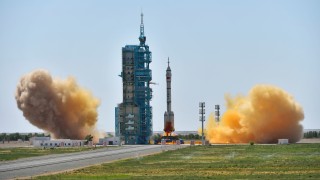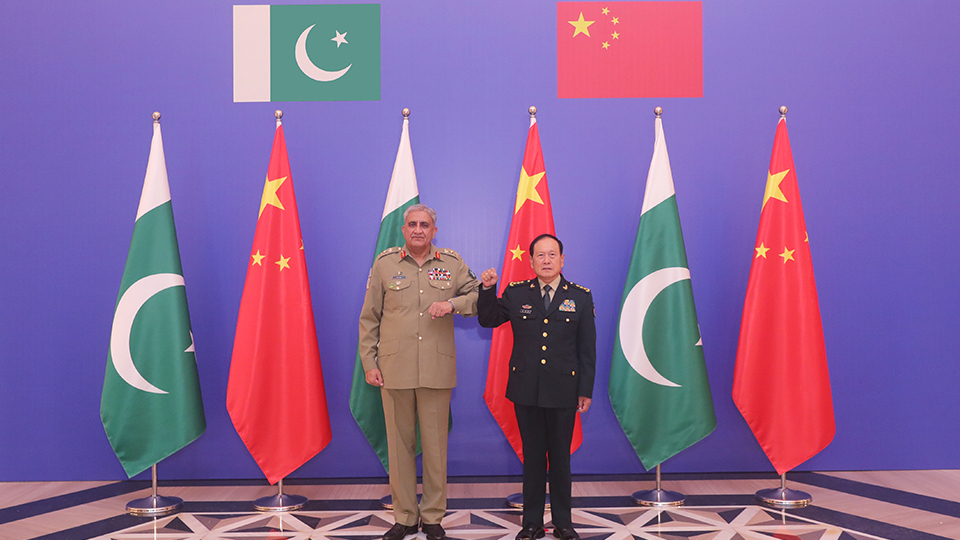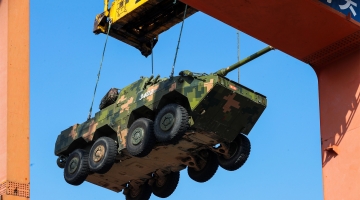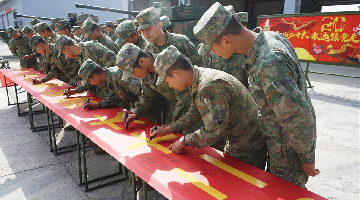By Zhang Jiadong
The US Department of Defense released a new, unclassified version of National Defense Strategy on October 27. When the last such strategy report was released in 2018, the US military was fighting the Afghan war, planning to turn from anti-terror efforts and combating extremists to the new direction of competition among traditional major countries. Now the 2022 strategy report is announcing the basic completion of that veering.
The 2022 NDS is focused on how to cope with China. Continuing the previous president Donald Trump’s strategic attention to China, the new report views it as America’s arch strategic rival and “our most consequential strategic competitor for the coming decades”. The US is trying to impose its own China strategy upon the international community. Beijing “is the only competitor out there with both the intent to reshape the international order and increasingly the power to do so,” said US Defense Secretary Austin.
The NDS makes it clear that the US military will develop eyeing the characteristics and direction of China’s military strengths. The DoD will spend an unprecedented US$130 billion in 2023 on developing high-tech military equipment including hypersonic weapons, cyber devices, AI and direction energy weapons. It will also change the tactics, adjust the scientific research portfolio, and lure the participation of more private businesses and non-government technical personnel. The trend of space militarization is further highlighted in the report with a rising possibility of an arms race in outer space. The NDS claims that China and Russia are quickly developing hypersonic missile technologies, which give them greater abilities to hit down satellites or change their orbits. Therefore, the report, assuming a space war and aiming to ensure the reliability of American satellites when under attack, suggests the US establish a low-orbit satellite belt to be able to better reconnoiter and detect hypersonic missiles. As a matter of fact, the US has already secured an absolute monopoly in the low-orbit satellite belt because of the existence of Starlink, which has played a major role in the Russia-Ukraine conflict. If more countries join the US in this direction, the sky will become more crowded and dangerous.
The changes in this new report are worth equal attention.
First, Russia is placed one notch down in America’s national defense strategy. Washington has constantly re-positioned Russia since Trump’s term. On the one hand, it elevated Moscow to the first tier of strategic importance; on the other hand, it put it after China. When Biden came into office, Washington downgraded Russia’s strategic level to be on a par with countries like Iran. The latest NDS report calls Russia’s special military operations against Ukraine an acute threat, but as Austin said, Russia, in the long term, won’t pose any systemic threat to the US, which seems to indicate that America no longer views Russia as a strategic rival.
Second, the US has put forth the new concept of “integrated deterrence” as a way of giving more importance and urgency to nuclear deterrence. The new NDS states that “Russia’s invasion of Ukraine underscores that nuclear dangers persist, and could grow, in an increasingly competitive and volatile geopolitical landscape”. It also confirms that the US will take decisive retaliatory measures against nuclear attacks to deter and stop potential nuclear conflicts. Through the new “integrated deterrence” concept, the superpower is trying to deter potential strategic rivals by forming and utilizing an extensive, comprehensive combination of military forces and economic and diplomatic pressure, as well as a strong network of allies, with nuclear deterrence remaining the cornerstone.
To sum up, the new NDS shows that the US military doesn’t expect a large-scale war in the short term. Washington thinks the threat from Russia is acute but not substantial, whereas the challenge from China is substantial but not acute. Its China strategy remains one that doesn’t avoid competition or confrontation but would make every effort to avoid a direct military conflict – that strategic bottom line persists in the China-US relations, implying that basic strategic mutual trust between the two countries hasn’t completely vanished.
Yet Washington also clarifies its goal with China – to stop China from obtaining superiority in any key area by all means, first and foremost the capability of high-tech innovation and of securing key industry chains.
(The author is a professor at the Center for American Studies, Fudan University)











